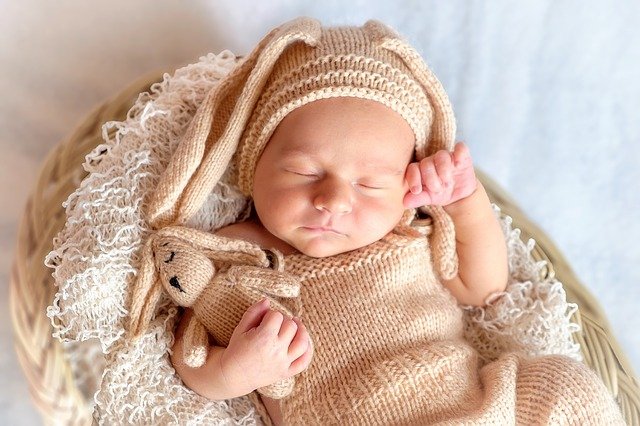Parasomnias : Types, Symptoms, & Causes | Sleep Foundation
文章推薦指數: 80 %
The most common NREM-related parasomnias are known as disorders of arousal. These parasomnias are characterized by recurrent episodes of ... Opensinanewwindow Share: Home /SleepDisorders /Parasomnias Parasomnias Whattheyare,whotheyaffect,theirdistincttypes,andwhichtreatmentscanhelp UpdatedMarch11,2022 Writtenby DaniellePacheco,StaffWriter MedicallyReviewedby Dr.AnisRehman,Endocrinologist FactChecked Ourdedicatedteamrigorouslyevaluateseveryarticle,guide,andproducttoensuretheinformationisaccurateandfactual.LearnMore Ourdedicatedteamrigorouslyevaluateseveryarticleandguidetoensuretheinformationisfactual,up-to-dateandfreeofbias. Ourmedicalreviewteamhasrecentlyevaluatedthispagetoensureaccuracy.Wewillcontinuetomonitorandrevisethisarticleasnewliteratureispublishedonparasomnias. “Parasomnia”isacatchalltermforunusualbehaviorsthatpeopleexperiencepriortofallingasleep,whileasleep,orduringthearousalperiodbetweensleepandwakefulness.Thesebehaviorsvaryconsiderablyintermsofcharacteristics,severity,andfrequency. Historically,parasomniaswereconsideredadefinitivesignofpsychopathology,butsomecontemporaryresearchersarguethesephenomenaoccurasthebraintransitionsinandoutofsleep,aswellasbetweenrapideyemovement(REM)andnon-rapideyemovement(NREM)sleepcycles.Parasomniasaremorecommoninchildrenthanadults,butthesebehaviorshavebeenrecordedacrossdifferentagegroups. TypesofParasomnia Whileeachparasomniacarriesdistinctsymptomsanddiagnosticcriteria,thesebehaviorscanbecategorizedintothreegeneralgroups:NREM-related,REM-related,and“other.” NREM-RelatedParasomnias Non-rapideyemovementsleepconstitutesthefirststageofone’ssleepcycle,knownas“shallow”sleep,andthesecond,third,andfourthstages,duringwhichthesleepbecomesgraduallydeeper.Collectively,thesestagesusuallylastabout90minutes. ThemostcommonNREM-relatedparasomniasareknownasdisordersofarousal.Theseparasomniasarecharacterizedbyrecurrentepisodesofincompleteawakening,limitedresponsivenesstootherpeopleattemptingtointerveneorredirectthesleeper,andlimitedcognitionduringtheepisode.Mostpeoplewhoexperiencedisordersofarousalhavelittletonomemoryoftheirepisodes.Thesedisordersinclude: Confusionalarousals:Thesleeperexhibitsmentalconfusionorconfusedbehaviorinbed.Mostpeoplewhoexperienceconfusionalarousalsdisplayverylittleautonomicarousalintheformofmydriasis(dilatedpupils),tachycardia(acceleratedheartbeat),tachypnea(acceleratedbreathing),orperspiration.ConfusionalarousalsarealsoknownasElpenorsyndrome. Sleepwalking:Alsoknownassomnambulism,sleepwalkingoccurswhenpeoplegetoutofbedwhilestillasleepbutexhibitlimitedawarenessorresponsivenesstotheirsurroundings.Theymayexhibitothercomplexbehaviorssuchassortingclothes.Sleepwalkingcanalsoleadtoinjuriesiftheindividuallosestheirbalanceorcollideswithotherobjects. Nightterrors(orsleepterrors):Peoplewhoexperiencenightterrorsoftenscreamintheirsleep,thoughmostarenotresponsivetooutsidestimuliandwillhavenorecollectionofthesourcefortheirterroruponwaking.Mostnightterrorepisodeslastbetween30secondsandthreeminutes. Sleep-relatedsexualabnormalbehaviors:Knowncolloquiallyas“sexsomnia,”thisspecificparasomniasubtypeischaracterizedbyunusualsexualbehaviorsduringsleep,suchasaggressivemasturbation,initiationofsexualintercourse,andsexualnoises. Studieshaveshownthatmalesandfemalesareequallysusceptibletodisordersofarousal,thoughageappearstoplayarole.Parasomniashavebeenreportedinroughly17%ofchildrenagesthreeto13.Forchildrenandadults15andolder,theprevalenceratefallsbetween2.9%and4.2%. AnothercommonNREM-relatedparasomniaissleeprelatedeatingdisorder,whichischaracterizedbyepisodesofdysfunctionaleatingthatoccurafterarousalfromsleep.Mostpeoplewiththisconditionexhibitlimitedresponsivenessduringtheireatingepisodes,andhavelittletonomemoryoftheevents.Hazardsassociatedwithsleeprelatedeatingdisorderincludeingestionoftoxicsubstances,injuriesfromcookingorpreparingfood,andphysiologicaleffectsofunhealthyorexcessiveeating. RelatedReading SleepDiary WhatIs"RevengeBedtimeProcrastination"? Chronotypes REM-RelatedParasomnias RapideyemovementsleepoccursfollowingthefirstfourNREMstagesofthesleepcycle.Followingthefirstcompletesleepcycle,NREMandREMstageswillrepeatinacyclicalfashionevery90minutesorsofortherestofthenight.Asthenamesuggests,aperson’seyeswillmoverapidlybeneaththeireyelidsduringREMsleep.Theywillalsoexperiencefasterbreathing,andincreasesinboththeirheartrateandbloodpressure. CommonREM-relatedparasomniasinclude: REMsleepbehaviordisorder:Thisdisorder–RSBDforshort–ischaracterizedbyunusualvocalizationsormovementsduringREMsleep,oftenasareactiontoadream.Itisusuallyattributedtodysfunctioninthemusclesresponsibleforskeletalmuscleatonia,theextremelyrelaxedstatethatoccursintheREMstage.PeoplewithRSBDmayundergopolysomnographyexaminationsthatrecordbrainactivityduringtheREMstage.Thisconditionismostcommoninpeopleaged50orolder.ClinicalfindingsofRSBDmaybenotedinpatientstakingcertainanti-depressionmedications. Recurrentisolatedsleepparalysis:Peoplewiththisconditionfeelcompletebodilyatrophyduringsleeponset–theperiodbeforetheyfallasleep–oruponwaking.Theywillnotbeabletomoveanypartofthebodyduringtheseepisodes,whichnormallydon’tlastmorethanafewminutes.Sleepparalysiscanleadtoanxietyordistressaboutfallingasleep. Nightmaredisorder:Everyonehasunpleasantdreamseverynowandthen.Nightmaredisorderislimitedtothosewhoexperiencerecurrent,vividdreamsdefinedbythreatstosurvivalorsecuritythatresultinfatigue,distress,reducedcognition,andotherdaytimeimpairments.NightmaredisorderisacommoncomponentofPost-TraumaticStressDisorder(PTSD).Motoractivityisoftenlimitedduringnightmareepisodes.Forchildrenwithnightmaredisorder,severepsychosocialstressorsareoftentoblame. OtherParasomnias The“other”categoryforparasomniasisdedicatedtobehaviorsthatoccurduringthetransitionbetweensleeporwakefulness,aswellasthosethatcanoccurduringNREMorREMsleep.Theseparasomniasinclude: Explodingheadsyndrome:Alsoknownassensorysleepstarts,peoplewiththisconditionwillhearaloudnoiseorfeelanexplodingsensationintheirheadwhentheywakeup.Theymayalso“see”animaginedflashoflightuponwaking.Thissensationcanleavethesleeperwithlingeringfeelingsofpalpitation,dread,andanxiety,butitisusuallypainless.Somepeoplemayexperiencemultipleepisodespernight. Sleeprelatedhallucinations:Peoplewiththisconditionexperiencehallucinationseitherduringsleeponset(hypnagogic)orwhentheywakeup(hypnopompic).Thesehallucinationsmaybevisual,auditory,tactile,orkineticinnature.Inextremecases,sleepersmayleavetheirbedinanattempttoescapewhattheyareexperiencing.Thehallucinationsmaypersistforuptoseveralminutesafterthesleeperawakens. SleepEnuresis:Knownthroughouttheworldas“bedwetting,”sleepenuresisreferstoinvoluntaryurinationduringsleep.Bedwettingisquitecommoninyoungchildren.Tobeconsideredaparasomnia,itmustoccurinpeopleagesfiveandolderandoccuratleasttwiceperweekforatleastthreemonths.Primarysleepenuresisreferstopeoplewhoneverwakeupfeelingdry,whilesecondarysleepenuresisoccursinindividualswhohavenotpreviouslyexperiencedbedwettingepisodesforatleastsixmonthsbeforethefirstepisodeoccurs. Thislistofparasomniasisnotexhaustive,butmerelyreflectiveofthemostcommonparasomniatypes.Ifyoubelieveyouareexperiencingaparasomnia,consultwithyourphysiciantolearnaboutpreventiontipsandparasomniatreatmentoptions. Wasthisarticlehelpful? YesNo AboutOurEditorialTeam DaniellePacheco StaffWriter Daniellewritesin-deptharticlesaboutsleepsolutionsandholdsapsychologydegreefromtheUniversityofBritishColumbia. Dr.AnisRehman Endocrinologist MD Dr.Rehman,M.D.,isaboard-certifiedphysicianinInternalMedicineaswellasEndocrinology,Diabetes,andMetabolism. Share: References +5 Sources 1. Schwab,R.(2020,June).Parasomnias.MERCKMANUALConsumerVersion. https://www.merckmanuals.com/home/brain,-spinal-cord,-and-nerve-disorders/sleep-disorders/parasomnias?query=parasomnia 2. Markov,D.,Jaffe,F.,&Doghramji,K.(2006).UpdateonParasomnias:AReviewforPsychiatricPractice.Psychiatry(Edgmont),3(7),69-76. https://www.ncbi.nlm.nih.gov/pmc/articles/PMC2958868/ 3. AmericanAcademyofSleepMedicine.(2014).InternationalClassificationofSleepDisorders(ThirdEdition),228-279[E-book]. https://learn.aasm.org/Users/Catalog.aspx 4. OfficeofCommunicationsandPublicLiaison,NationalInstituteofNeurologicalDisordersandStroke,NationalInstitutesofHealth.(2019,August13).BrainBasics:UnderstandingSleep.NationalInstituteofNeurologicalDisordersandStroke. https://www.ninds.nih.gov/Disorders/patient-caregiver-education/Understanding-sleep 5. Kierlin,L.,&Littner,M.R.(2011).Parasomniasandantidepressanttherapy:areviewoftheliterature.Frontiersinpsychiatry,2,71. https://doi.org/10.3389/fpsyt.2011.00071 LearnmoreaboutParasomnias Sleepwalking UpdatedBy EricSuni | March11,2022 SleepParalysis By EricSuni | June24,2022 SleepTalking By EricSuni | March11,2022 NightTerrors By DaniellePacheco | March18,2022 HypnicJerks By JaySummer | June17,2022 REMSleepBehaviorDisorder By DaniellePacheco | March18,2022 ExplodingHeadSyndrome By JaySummer | April13,2022 SleepTexting By JaySummer | May10,2022 Sexsomnia:WhattoKnowAboutSleepSex By DaniellePacheco | April18,2022 ConfusionalArousalsandSleepDrunkenness By DaniellePacheco | April25,2022 OtherArticlesofInterest Insomnia LearnAboutInsomnia WhatToDoWhenYouCan'tSleep? TypesofInsomnia InsomniaSymptoms WhatCausesInsomnia Narcolepsy Narcolepsy NarcolepsySymptoms Cataplexy NarcolepsyMedications NarcolepsyTest SleepSolutions BestMattress WeightedBlanketReviews MelatoninandSleep MattressComparisons BestComforters SleepApnea LearnAboutSleepApnea CentralSleepApnea ObstructiveSleepApnea ChildrenandSleepApnea LinkBetweenSleepApneaandHeartDisease MentalHealthandSleep HowDoesMentalHealthImpactSleep? TheRelationshipBetweenDepressionandSleep HowDoesAnxietyAffectSleep? PTSDandSleep HowDoesDementiaAffectSleep? SleepFoundation Fact-Checking:OurProcess TheSleepFoundationeditorialteamisdedicatedtoprovidingcontentthatmeetsthehigheststandardsforaccuracyandobjectivity.Oureditorsandmedicalexpertsrigorouslyevaluateeveryarticleandguidetoensuretheinformationisfactual,up-to-date,andfreeofbias. TheSleepFoundationfact-checkingguidelinesareasfollows: Weonlycitereputablesourceswhenresearchingourguidesandarticles.Theseincludepeer-reviewedjournals,governmentreports,academicandmedicalassociations,andinterviewswithcredentialedmedicalexpertsandpractitioners. Allscientificdataandinformationmustbebackedupbyatleastonereputablesource.Eachguideandarticleincludesacomprehensivebibliographywithfullcitationsandlinkstotheoriginalsources SomeguidesandarticlesfeaturelinkstootherrelevantSleepFoundationpages.Theseinternallinksareintendedtoimproveeaseofnavigationacrossthesite,andareneverusedasoriginalsourcesforscientificdataorinformation. Amemberofourmedicalexpertteamprovidesafinalreviewofthecontentandsourcescitedforeveryguide,article,andproductreviewconcerningmedical-andhealth-relatedtopics.Inaccurateorunverifiableinformationwillberemovedpriortopublication. Plagiarismisnevertolerated.Writersandeditorscaughtstealingcontentorimproperlycitingsourcesareimmediatelyterminated,andwewillworktorectifythesituationwiththeoriginalpublisher(s). AlthoughSleepFoundationmaintainsaffiliatepartnershipswithbrandsande-commerceportals,theserelationshipsneverhaveanybearingonourproductreviewsorrecommendations.ReadourfullAdvertisingDisclosureformoreinformation. DaniellePacheco StaffWriter Daniellewritesin-deptharticlesaboutsleepsolutionsandholdsapsychologydegreefromtheUniversityofBritishColumbia. ReadFullBio Wanttoreadmoreaboutallourexpertsinthefield?LearnAboutTheEditorialTeam Dr.AnisRehman Endocrinologist Dr.Rehman,M.D.,isaboard-certifiedphysicianinInternalMedicineaswellasEndocrinology,Diabetes,andMetabolism. ReadFullBio Wanttoreadmoreaboutallourexpertsinthefield?LearnAboutTheEditorialTeam Ifyou'rereadyformore⟶signuptoreceiveouremailnewsletter! Yourprivacyisimportanttous.
延伸文章資訊
- 1Disorders of arousal from non-rapid eye movement sleep in ...
Disorders of arousal from non-rapid eye movement (NREM) sleep are parasomnias that include confus...
- 2Parasomnias : Types, Symptoms, & Causes | Sleep Foundation
The most common NREM-related parasomnias are known as disorders of arousal. These parasomnias are...
- 3Non-rapid eye movement sleep arousal Disorder in Adults
Individuals with parasomnias such as non-rapid eye movement sleep arousal disorders and nightmare...
- 4NonREM Disorders of Arousal and Related Parasomnias
We discuss mainly nonrapid eye movement sleep and related parasomnias in this article. Sleepwalki...
- 5NREM parasomnias: a treatment approach based upon a ...
Non rapid eye movement (NREM) parasomnias are abnormal behaviors arising primarily but not exclus...

